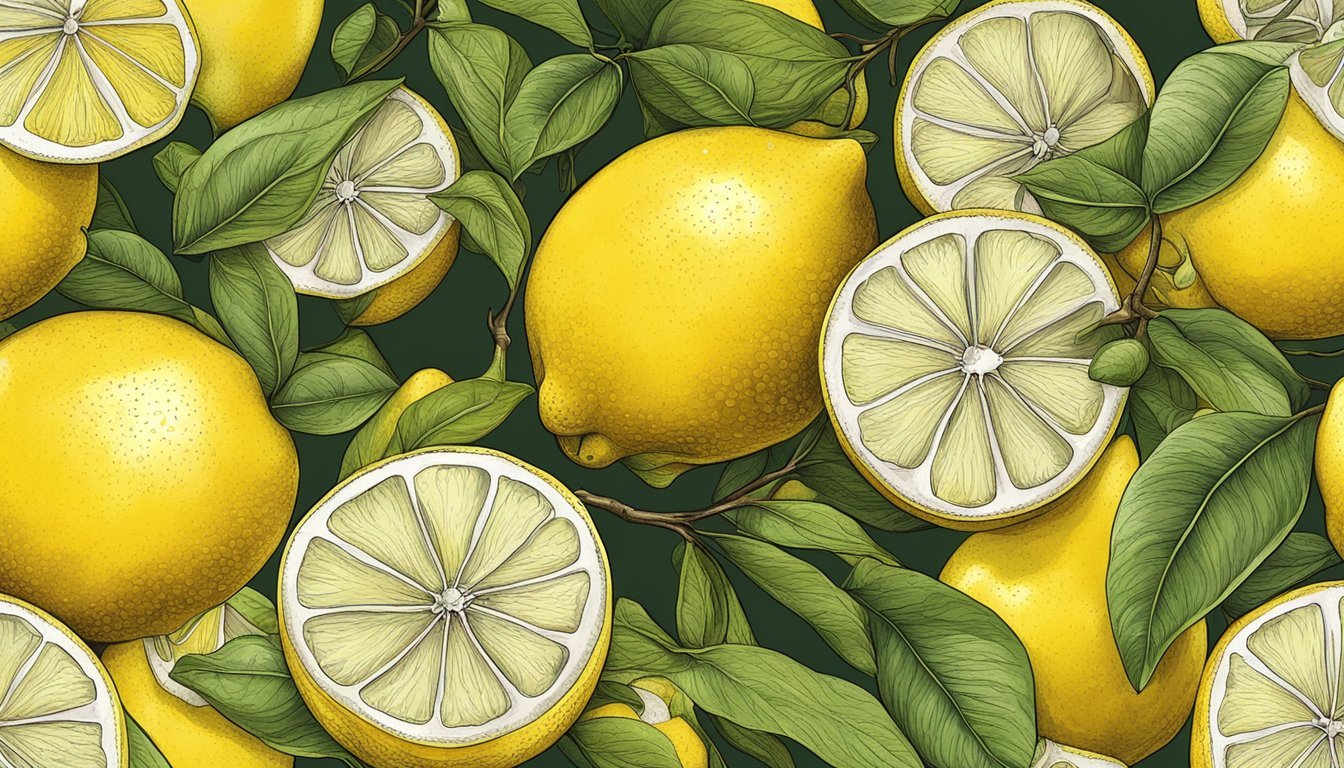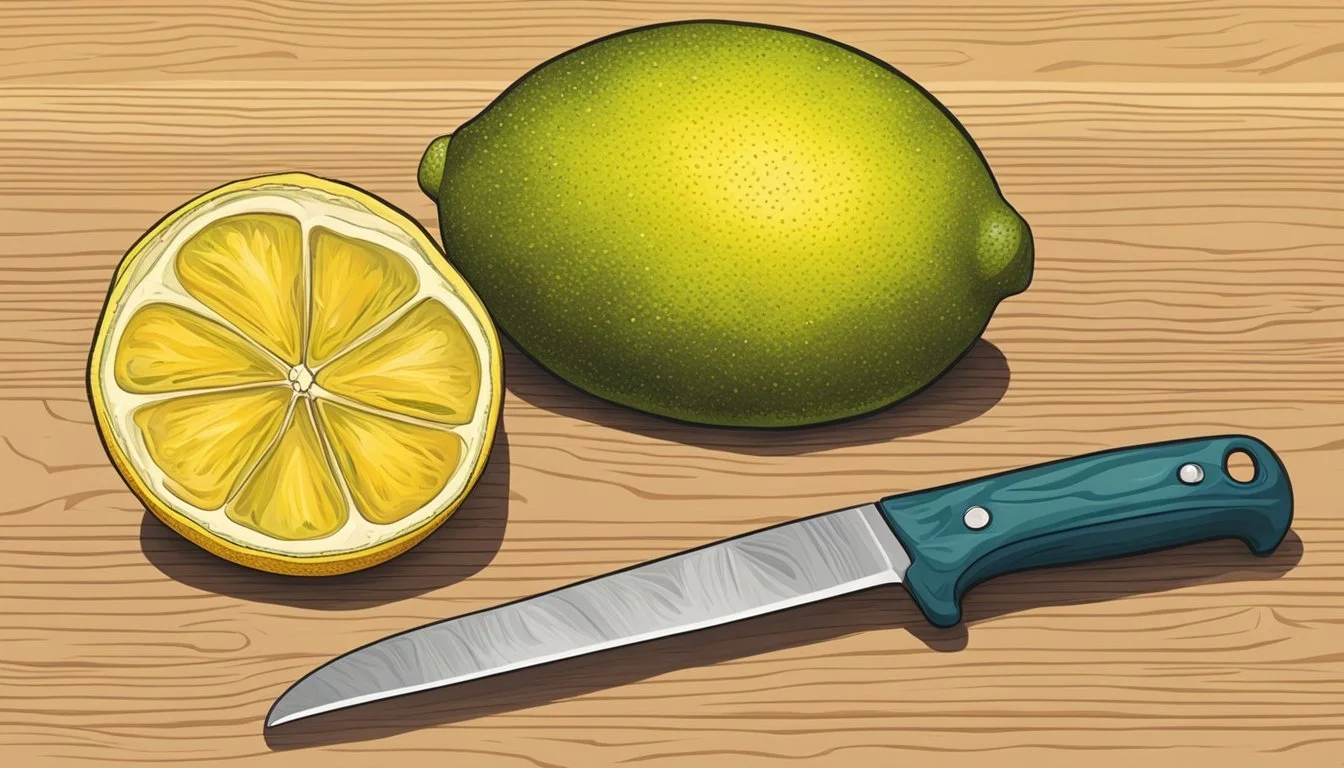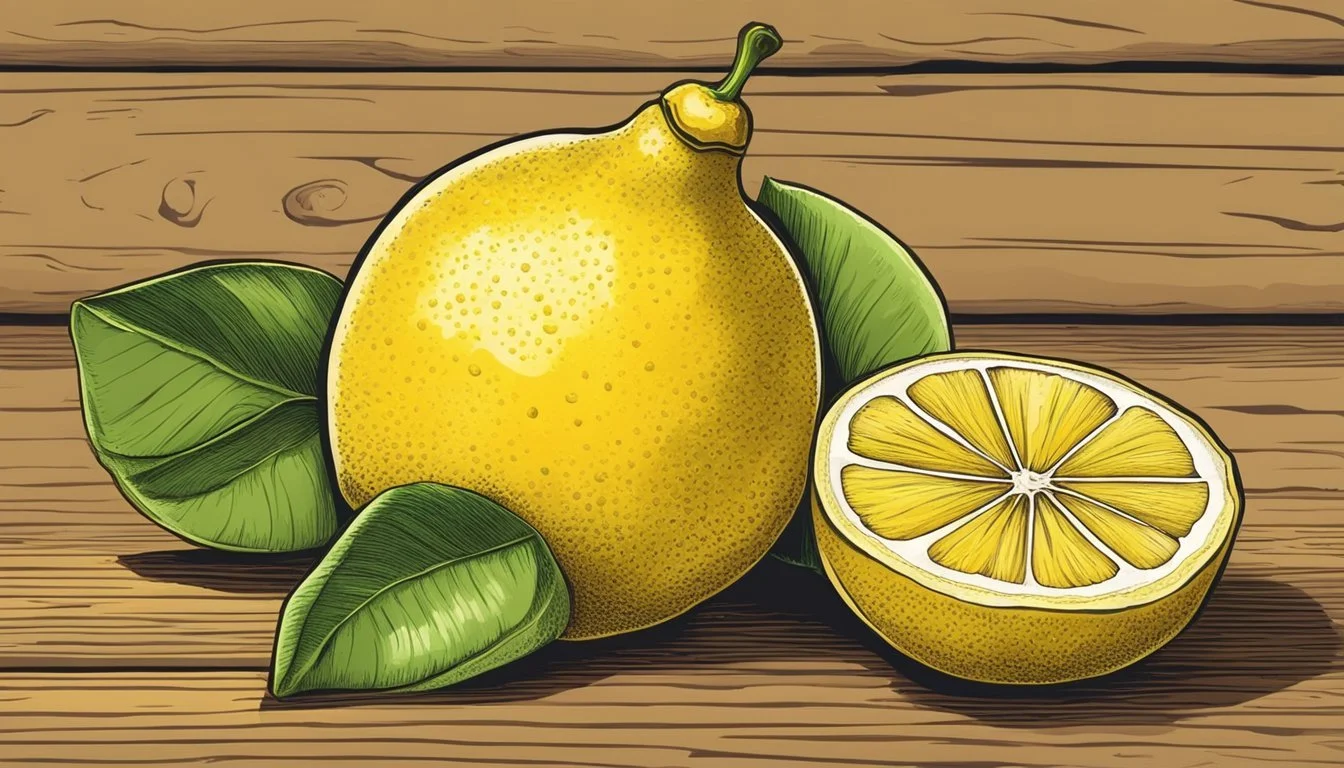How to Tell if a Citron is Ripe
Signs and Tips for the Perfect Pick
Determining the ripeness of a citron, a distinctive citrus fruit, is crucial for both culinary and nutritional purposes. Unlike many citrus fruits that are ready to consume when the skin turns orange or yellow, the citron demands careful assessment. Its bright yellow color indicates ripeness, but it’s important to avoid those with green or yellow-orange hues. The exterior of a ripe citron emits a lemony scent, while the thick, white pith encases minimal juice sacs. While the pith is notably bitter and generally inedible, the zest is highly valued for its strong, aromatic flavor.
Citrons are less commonly found in grocery stores compared to other citrus fruits, and selecting a ripe one can be challenging. The texture of the fruit also plays a role in determining its ripeness, with a smooth, firm skin being preferable to one that is wrinkled or loosened, which typically suggests overripeness. Because of the minimal juice content, the primary culinary use of citron lies in the zest and the candied peel, which are used to flavor a variety of dishes and confectioneries. The ripeness of the fruit significantly influences its taste and the richness of the flavors it can impart.
Key Takeaways
A ripe citron is bright yellow and has a lemony aroma.
The optimal texture for ripe citrons is smooth and firm, avoiding any with wrinkled or loose skin.
The main culinary value of citron lies in its zest, which is used to enhance the flavor of recipes.
Understanding Citron and Its Varieties
The citron is a distinctive citrus with unique characteristics distinguishing it from other citrus fruits. It has a varied lineage, with several varieties each having its own origins and features.
Characteristics of a Citron
A citron (Citrus medica) is a large, fragrant citrus fruit with a prominently thick rind and a small amount of pulp. The texture of the rind is rough and bumpy. When ripe, its skin turns to a yellowish color and emits a strong, lemony scent. Unlike other citrus fruits such as lemons and oranges, the citron's interior contains negligible juice sacs, and the flavorful rind takes precedence over the flesh in culinary uses.
Popular Varieties and Their Origins
Citrons are one of the four original citrus species from which other types have developed. Through hybridization, numerous varieties and hybrids have emerged, including:
Etrog: Primarily used in Jewish rituals, this variety of citron is native to the Middle East.
Buddha's Hand: Known for its distinct 'fingers', it is mainly cultivated in China and other parts of Asia.
Corsican Citron: Grown on the island of Corsica, it is valued for its aromatic qualities.
In considering other varieties, we find Meyer lemons, which are a cross between citrons and oranges or mandarins. Originating from China, they are now popular in California. Satsumas, native to Japan, are a type of tangerine with a sweet flavor, while Yuzu, another Japanese citrus, is a hybrid between a satsuma and the primitive ichang papeda.
Citrus fruits such as Valencia oranges, navel oranges, and blood oranges have also been derived from ancient citron varieties. Kumquats, while resembling the size and shape of oranges, are a separate genus known for their sweet rind and sour flesh. Pomelos share the ancestry tree as well, contributing their large size and mild flavor to the genetic mix.
This genetic diversity highlights the citron's significance, not just as a standalone citrus but also as a foundational breed from which many other delicious and tangy citrus fruits have been developed.
Identifying Ripeness
Effectively determining when a citron is ripe involves assessing several sensory cues including color, firmness, aroma, and flavor. This multi-step approach ensures that the fruit can be consumed at its peak flavor and quality.
Color Indications
When assessing ripeness, citrons typically exhibit a shift in color. A ripe citron will have a bright yellow hue. It should be noted that color alone is not always conclusive since some citrons may retain a greenish tinge even when ripe.
Firmness and Size
A ripe citron should feel firm with a slight give on gentle pressure, indicating juicy ripeness. Conversely, a fruit that feels too soft may be overripe. In terms of size, the fruit should appear fully plump, suggesting a high juice content.
Aroma and Skin Texture
The skin of a ripe citron becomes more fragrant and the aroma may hint at its internal sweetness. The skin texture should be smooth with a fine-grained appearance, while a rough or wrinkled texture could suggest dehydration or overripeness.
Taste Test for Sugar Content
To check for sugar content and sweetness, one may conduct a taste test. Slice into the citron; a balanced flavor profile with ample sweetness and moderate acidic tang suggests ripeness. If the taste veers towards too sour or vinegary, the fruit may not be fully ripe or may have overripened.
Harvesting and Storing Citrons
The proper harvesting and storage of citrons are essential to maintain their health benefits, flavor, and aroma. It's vital to identify the ripe fruits and handle them correctly post-harvest to ensure their longevity, be it through refrigeration or freezing methods.
Optimal Harvesting Time
Citrons typically ripen from late summer onwards. They are ready for harvest when they exhibit a deep yellow color and a slightly soft texture upon gentle pressure. One should monitor the fruit’s color transition from green to yellow, as this indicates maturity. The aroma of the fruit can also be a strong indicator; a fragrant smell suggests the citron is ripe.
Post-Harvest Handling
After harvesting, it is crucial to handle citrons gently to prevent bruising. The rind is fragrant and contains essential oils that are valuable and can be damaged by rough handling. Additionally, the fruit should be cleaned using a soft cloth or brush to remove any dirt or residue, avoiding water as excess moisture can promote spoilage.
Citron Storage Techniques
Citrons can be kept at room temperature for a short period if they are to be used quickly. For prolonged storage, these methods are recommended:
Refrigeration:
Shelf Life: 2-3 weeks
Temperature: 45-48°F (7-9°C)
Humidity: High, to prevent drying out
Storage Method: Place in the crisper drawer in a perforated plastic bag or wrapped in paper towels.
Freezing:
Shelf Life: Up to 6 months
Temperature: 0°F (-18°C) or lower
Method: Segment the citron and remove seeds. Citron zest can be grated and frozen, while the pulp can be juiced. Store in airtight containers or heavy-duty freezer bags.
Refrigerating and freezing help in preserving the health benefits of citrons, as the cold temperatures slow the degradation of vitamins and preserve the citrus fruit’s beneficial properties.
Culinary Uses of Ripe Citrons
Ripe citrons, with their thick rinds and fragrant aroma, are distinctive citrus fruits that offer a variety of uses in the kitchen, from enhancing desserts to spicing up savory dishes.
Citron in Desserts and Sweets
Ripe citrons are a culinary treasure for making desserts and sweets. The thick white pith, once candied, imparts a delightful chewiness and a mellow citrus flavor. Recipes commonly call for dice or thin slices of the candied rind as an addition to baked goods. The zest of ripe citrons can also be grated and added to pastry doughs, imparting a lemon-like fragrance without the tartness of more common citrus fruit.
Example Dessert Uses:
Candied citron peel in fruitcakes and panettone
Citron marmalade spread on toast or as a tart filling
Finely grated zest mixed into cookie or scone batter
Cooking with Citrons
The ripe citron’s rind excels in savory applications as well. It brings a nuanced citrus note to roasted meats (What wine goes well with roasted meats?), stews, and dressings. One can finely dice the rind and incorporate it into marinades or use it to create flavor-infused oils and vinegars. Because the citron's juice is minimal and lacks the sharpness typical of oranges or lemons, it is rarely used, and the focus remains on utilizing the fragrant, flavorful peel.
Example Savory Uses:
Citron-infused vinegar for salad dressings
Diced peel as a flavoring in slow-cooked meat dishes
Slices of rind included in a pot of simmering grains for subtle aroma
Making Beverages with Citrons
Ripe citrons can enhance beverages by imparting a refreshing, citrusy aroma. Unlike other citrus fruits, citrons have less juice, so they are not squeezed for their liquid. However, the peel can be used to infuse water, teas, and cocktails, adding a unique twist to traditional lemon-based drinks. It is especially popular in the preparation of a traditional Jewish ritual citron drink during the holiday of Sukkot.
Example Beverage Uses:
Citron peel steeped in hot tea for added flavor
Strips of the zest used to infuse water or cocktails
Thinly sliced rind as a garnish for specialty drinks
Health Benefits of Citrons
Citrons, like other citrus fruits, are revered not only for their unique flavor but also for their rich nutritional profile. They bring a host of benefits to the table, from essential vitamins to health-boosting antioxidants.
Nutritional Composition
The citron fruit stands out for its rich vitamin and mineral content. Citrons contain:
Vitamin C: Essential for immune system function.
Iron: Important for blood health.
Potassium: Helps regulate blood pressure.
Vitamin C and Antioxidants
Vitamin C is the highlight of citron's nutritional portfolio, providing a significant boost to the immune system. This powerful antioxidant helps combat free radicals, reducing the risk of chronic diseases and supporting skin health. The presence of other antioxidants in citrons further aids in shielding the body from oxidative stress.
Dietary Fiber and Digestive Health
Citrons are also a good source of dietary fiber, which is beneficial for digestive health. Fiber aids in maintaining bowel regularity and can help prevent digestive disorders. The flesh and pith of the fruit contribute to the overall fiber content, promoting a healthy gut.
Troubleshooting Common Ripeness Issues
When determining the ripeness of citrons, one must differentiate between signs of overripe and underripe fruits while also being mindful of pests and diseases that can mimic or alter ripeness cues.
Overripe and Underripe Citrons
Identifying Overripe Citrons:
Texture: Overripe citrons often have a soft texture and may exhibit a wrinkled or loose rind. A rind that easily gives to slight pressure usually indicates overripeness.
Color: A faded or overly dull color can be a sign of an overripe citron, though color should not be the sole indicator as it can be misleading.
Taste: An overripe citron may taste overly sweet or fermented, losing the characteristic tangy sharpness.
Identifying Underripe Citrons:
Texture: Underripe citrons are typically firm with a taught, shiny rind.
Taste: They have a pronounced sourness due to lower sugar content. The lack of sweetness indicates that the citron has not yet reached full ripeness.
Difficulty: Underripe citrons can be hard to juice, as they contain less liquid.
Addressing Pests and Diseases
Pests:
Symptoms: Small punctures or deformities on citrons can signal a pest issue, which may cause premature ripening or decay.
Action: Regular inspection can help detect pests early. One can use appropriate eco-friendly pesticides or introduce natural predators to control the presence of pests.
Diseases:
Symptoms: Discoloration, spots, or mold on the rind might indicate disease, which can alter the taste and texture of the citron.
Action: To address diseases, ensure proper air circulation, sunlight, and avoid overwatering. If a disease is detected, remove and destroy affected fruits immediately to prevent spread.
Frequently Asked Questions
This section provides concise answers to common queries about citron usage and cultivation, addressing optimal ripeness for different applications and growing techniques.
Questions about Citron Usage
How can one ascertain if a citron is ripe enough for culinary use?
A ripe citron should have a bright yellow color and a slightly bumpy texture. It will feel heavy for its size, indicative of ample juice content, and exhibit a pleasing, fragrant aroma. The citrus fruit should give slightly under pressure but not be too soft.
What are the best recipes to utilize ripe citrons?
Ripe citrons are versatile in the kitchen. They can be employed in:
Preserves: The thick rind is ideal for candying or making citron preserves.
Baking: Finely grated zest adds a zesty flavor to cakes and pastries.
Beverages: The fragrant juice enhances cocktails and non-alcoholic drinks.
Is it possible to substitute lemons or other citrus fruits for citron in recipes?
Yes, lemons, particularly Meyer lemons due to their sweetness, or even kumquats and navel oranges can sometimes substitute citron in recipes, although the unique flavor of citron will be missing.
Should citrons be purchased from grocery stores or picked straight from the tree?
Either option works, but for the freshest experience, a citron picked straight from the tree when ripe is ideal. In grocery stores, one should look for citrons with a glossy, unblemished rind.
Questions about Growing Citrons
When is the ideal time to harvest citrons from the tree?
Citrons are typically ready to harvest when they are:
A deep yellow hue.
Slight give when gentle pressure is applied.
Harvesting time may vary depending on climate and specific cultivar.
What are some tips for growing citrons to ensure they reach optimal ripeness?
Growing citrons successfully involves:
Sunlight: Ensuring they receive full sun exposure.
Soil: Planting them in well-draining soil with a proper pH balance.
Water: Providing regular watering while avoiding waterlogged roots.
By following these guidelines, one can cultivate citrons that reach their perfect ripeness for a variety of uses.





